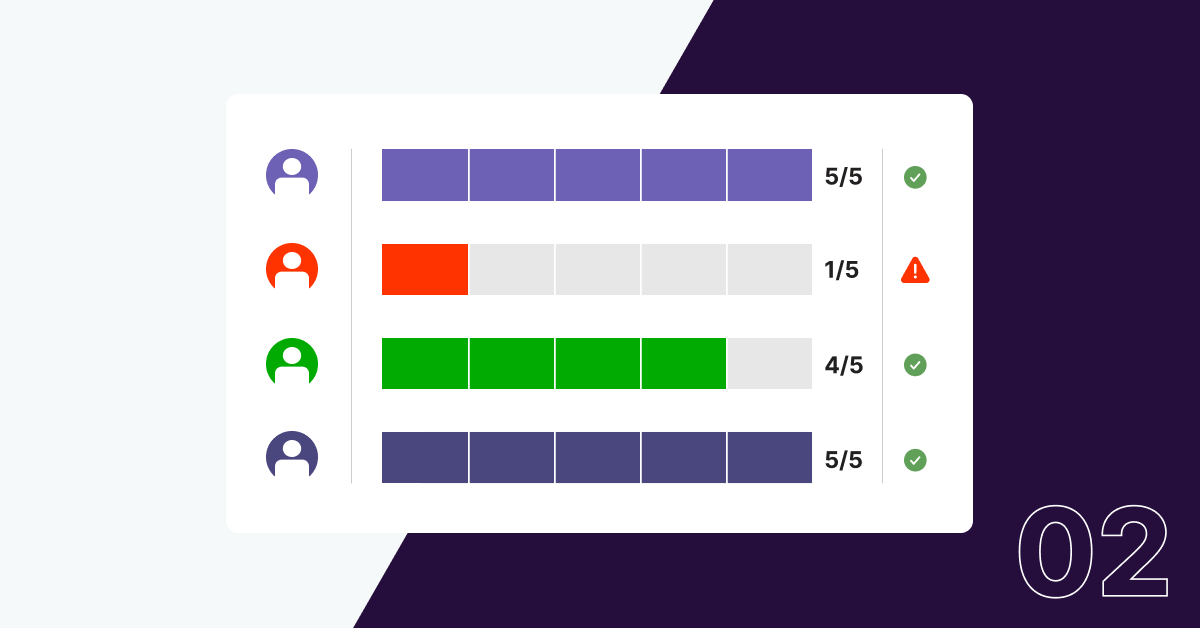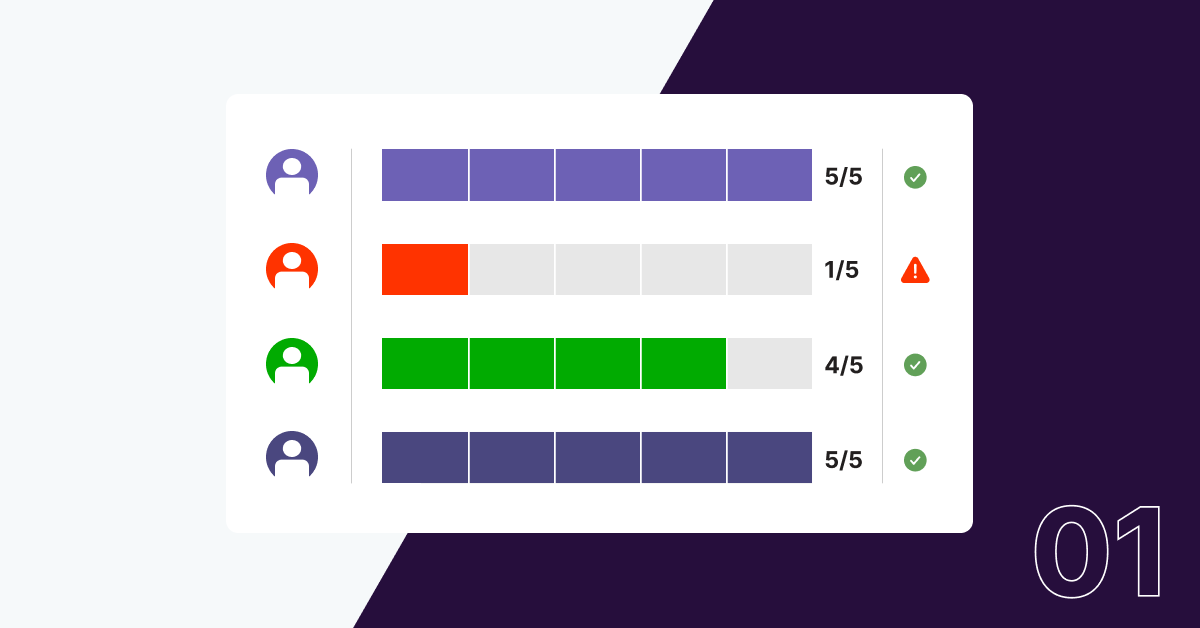At the height of the social justice movement in 2020, many companies were quick to publish diversity pledges as a signal of their commitment to creating more inclusive and fair workplaces. However, in the years since, not much progress seems to have been made.
A major roadblock seems to be that many pledges were not backed by strategic action plans, leadership accountability, and the right data and analytics. According to the 2023 Workplace Equity Trends Report, over 90% of companies have some form of diversity goals, but most don’t have concrete plans to achieve them. A Josh Bersin report found that about 80% of companies are “just going through the motions” of DE&I and “not holding themselves accountable.”
Below, we discuss why metrics matter for accountability and how companies can leverage data to make real progress around their diversity goals.
Representation and the opportunity gap
Companies are increasingly on the hook to disclose data on pay gaps, which are driven in part by representation gaps in the highest paying jobs of the company. After normalizing for available talent, white men in the U.S. occupied executive and management positions at higher rates than any other group in 2020. White men are 1.9 times as likely as white women to be in top jobs, 3.6 times as likely as BIPOC men, and 6.1 times as likely as BIPOC women.
There are many interconnected issues leading to women and people of color being underrepresented at the highest organizational levels, including:
- Inequitable promotion rates: According to LeanIn.Org and McKinsey & Company’s 2022 Women in the Workplace Report, women fall behind men at the first step of moving from entry-level to manager (sometimes referred to as the “broken rung” in the career ladder). For every 100 men who are promoted from entry level to manager, only 87 women are promoted, and only 82 women of color are promoted. This leaves too few women in the leadership pipeline to then promote into senior positions.
- Inequitable attrition rates: Sometimes called the “leaky bucket”, this can be a signal of inclusivity and belonging issues in the company culture. For example, women leaders are leaving their companies at the highest rate we’ve ever seen, and at a higher rate than men in leadership: for every woman at the director level who gets promoted to the next level, two women directors are choosing to leave their company.
- Inequitable access to career-boosting projects and opportunities: For example, 81% to 88% of white men report fair access to career-enhancing assignments, while as low as 50% of other employee groups report the same.
Disproportionate access to jobs, promotions, and other forms of career advancement is known as the “opportunity gap”. Black and Latina women face the largest opportunity gaps of any group. White men in the U.S. are 31% of all employees yet 44% of mid-level management and 57% of executives while Black women are 8.3% of all employees yet only 4.0% of mid-level management and 1.8% of executives, and Latina women are 7.5% of all employees, yet only 3.8% percent of mid-level management and 1.7% of executives.
The key to setting and achieving diversity goals? Data
Many companies set lofty diversity goals that sound something like, “By 2030, we will increase the representation of women by 40%”. A goal like this sounds great, but all too often is not grounded in what’s achievable for the organization’s available talent pool. Additionally, even if goals are achievable, some leaders may see long-term goals as their successor’s problem, reducing accountability. It may take years for organizations to hit their diversity targets, so a long-term goal needs accompanying annual metrics to ensure an organization is on the right track and to increase accountability.
“In an effort to improve diversity in the workplace, many companies are now setting diversity goals and posting progress reports. This is a promising move, but for it to be effective, companies have to do it right. Their goals and reports need [to] be detailed to create transparency; they need to be shared with insiders and the public to induce accountability; and they need to be accompanied by action plans to promote change.”
– Alexandra Kalev, chair of the Department of Sociology and Anthropology at Tel Aviv University & Frank Dobbin, chair of the Department of Sociology at Harvard University (co-authors of Getting to Diversity: What Works and What Doesn’t) | Harvard Business Review
Getting specific about what you are measuring and using data to set and forecast realistic diversity goals is key to actually achieving progress. A recent Harvard Business Review article discussed how metrics are critical to DE&I progress for two major reasons. First, by painting a picture in numbers, data is a powerful tool to help achieve buy-in and create advocates for diversity initiatives. Second, metrics are crucial to pinpoint exactly which areas are in greatest need of improvement. As one of the authors of the article states, “Without precise metrics, a DEI effort can spend a lot of time and money trying to fix the wrong thing.”
For diversity goals to be actionable, they need to be specific, achievable, and have a realistic time horizon. According to LeanIn, “more than 90% of companies track women’s overall representation, but only 65% track gender differences in promotion rates.” The more granular you can get with your data tracking, the more easily you’ll be able to zero in on hot spots of opportunity inequity. Some types of workplace equity analysis to consider to get a holistic understanding of your opportunity gap include:
- Representation analysis: Identifying demographic trends by job type or level
- Diversity benchmarking: Comparing internal demographics to external sources, such as U.S. Census data
- Recruitment/hiring analysis: Tracking applicant demographics through the recruitment funnel
- Performance rating analysis: Identifying differences in performance ratings by employee identity group
- Promotions analysis: Identifying differences in employee engagement by employee identity group
- Attrition analysis: Identifying differences in attrition rates by employee identity group
A representation analysis is a critical first step of diversity goal-setting because it helps you answer the question “what do we look like today?” Once you level-set on where you currently stand, you can use diversity benchmarking to understand what’s possible for your internally available talent pool and external labor pool market, so you can then set realistic, data-backed targets. The third step is to use data to forecast when you’ll be able to meet your goals based on your current employment practices.
To prioritize your efforts, you should dig into the drivers of inequities in hiring, promotions, performance assessments, and retention, then focus your attention on the areas of the biggest gaps (and therefore greatest opportunities for improvement). Finally, you should continue to track your progress over time so you can communicate with stakeholders about both gains and setbacks, and advocate for investments as needed to ensure you will hit your goals.
A roadmap to opportunity equity
Goals without strategic plans and accountability are just lip service — and it’s fair for employees to be skeptical of what they perceive to be performative, superficial, or ‘woke-washing’ gestures that don’t lead to meaningful change. Three-quarters of employees believe their organizations’ racial equity policies are not genuine — which is not only ineffective at achieving progress but also correlated with feelings of burnout, lack of inclusion, loss of trust, and decreased performance and productivity. This matters enormously in today’s job market, in which HR leaders are increasingly focused on retaining top talent over hiring.
Companies must demonstrate data-backed progress in order to follow through on diversity commitments and prove they truly value employees based on what they contribute. OppEQ™from Syndio gives you the data insights you need to set realistic diversity goals, identify and prioritize areas of greatest impact, and forecast progress over time — so you can create accountability and invest where it matters most. Want to see how it works? Explore OppEQ at the link below.


